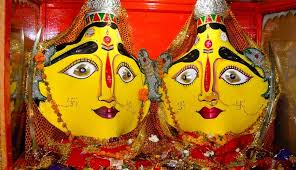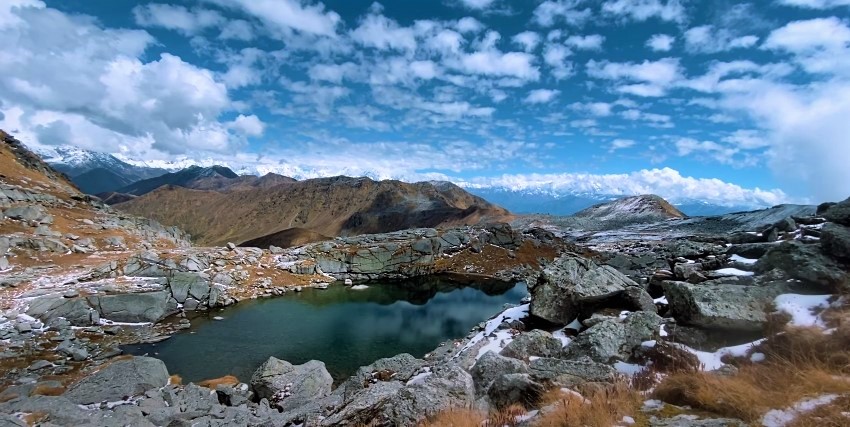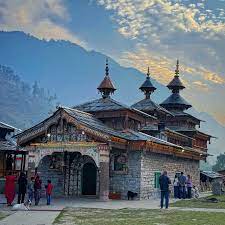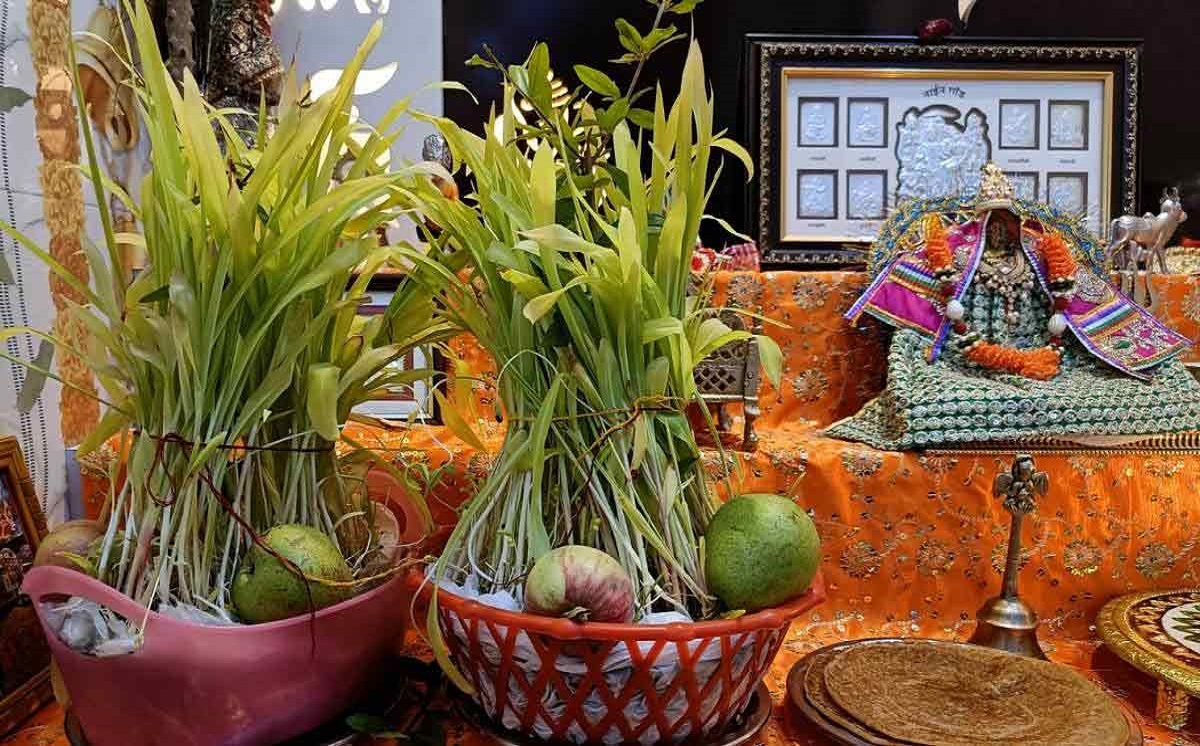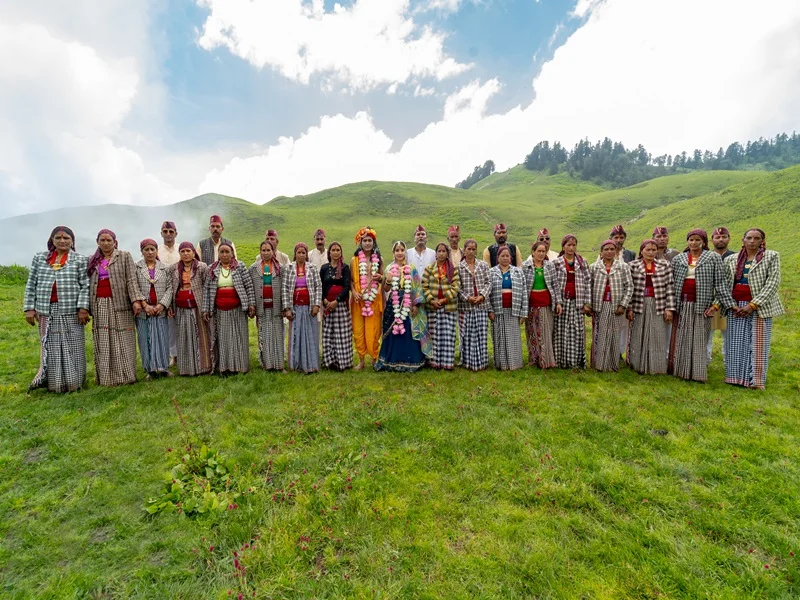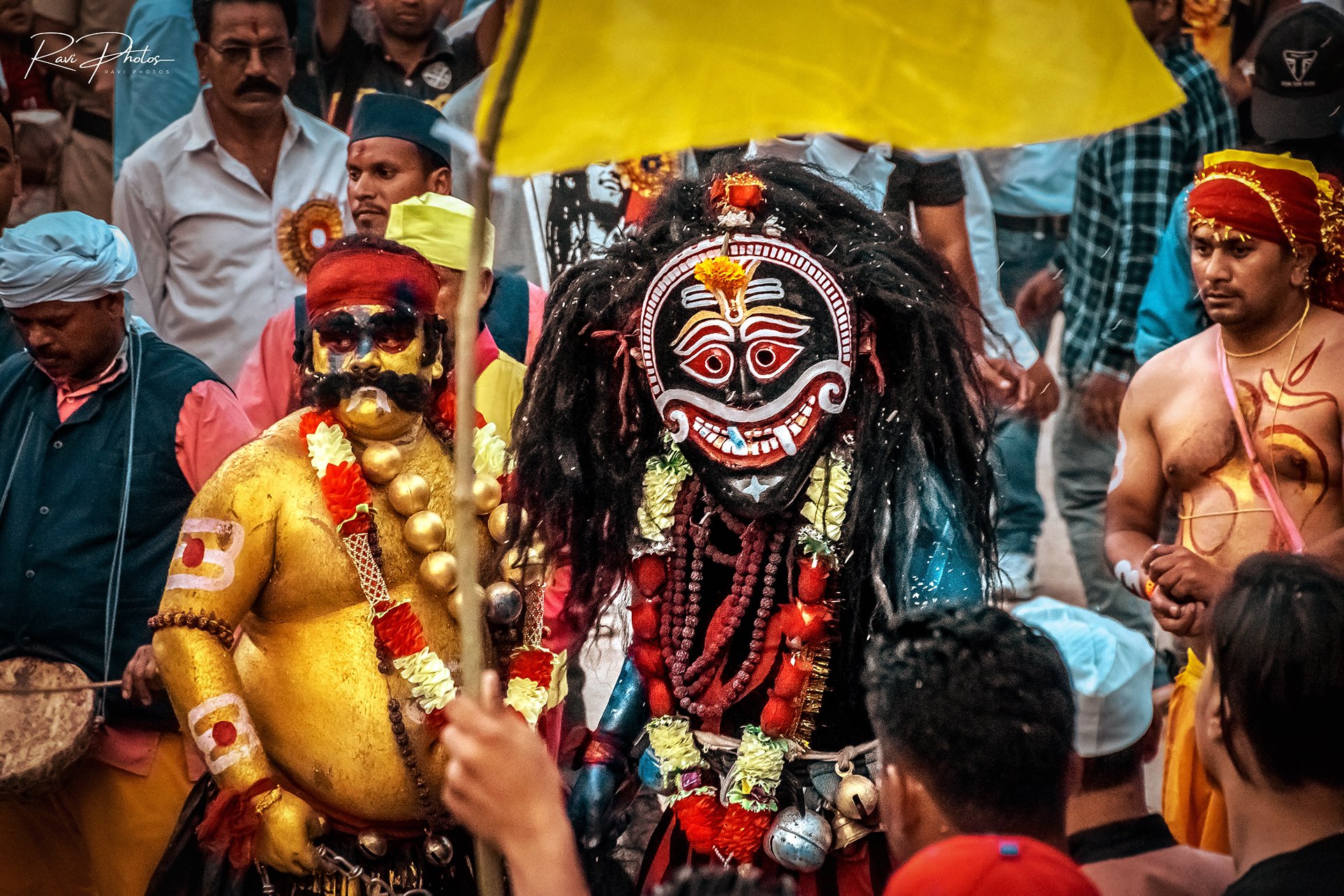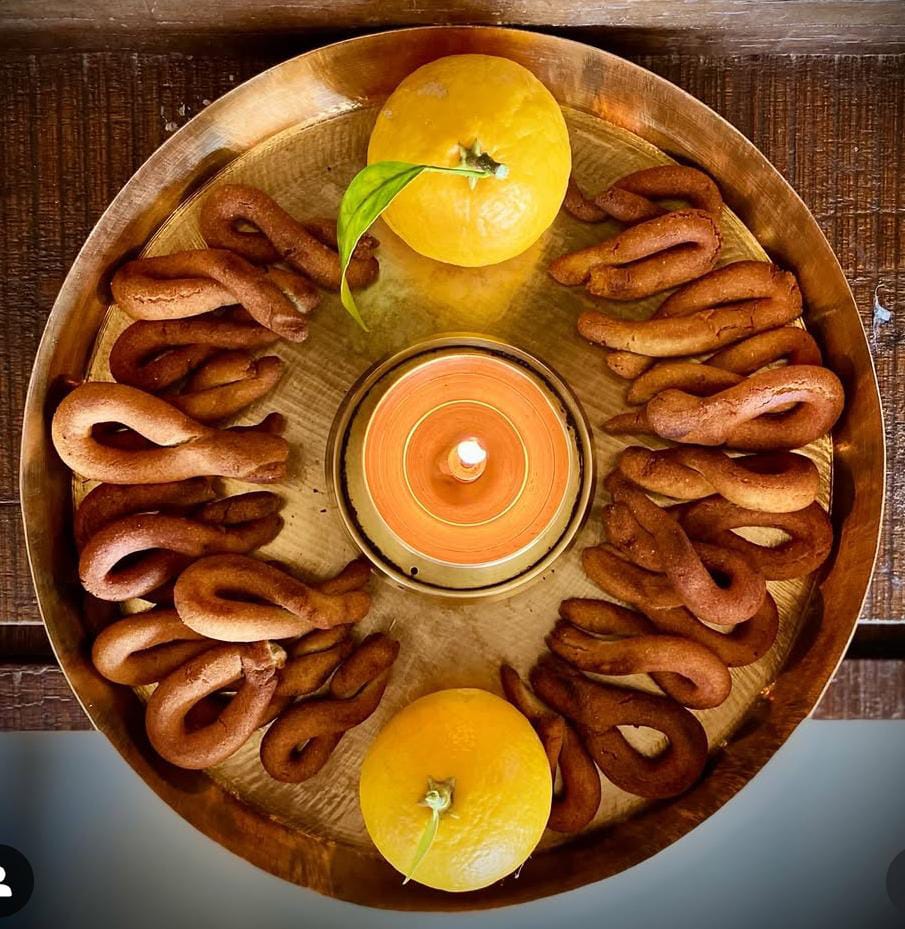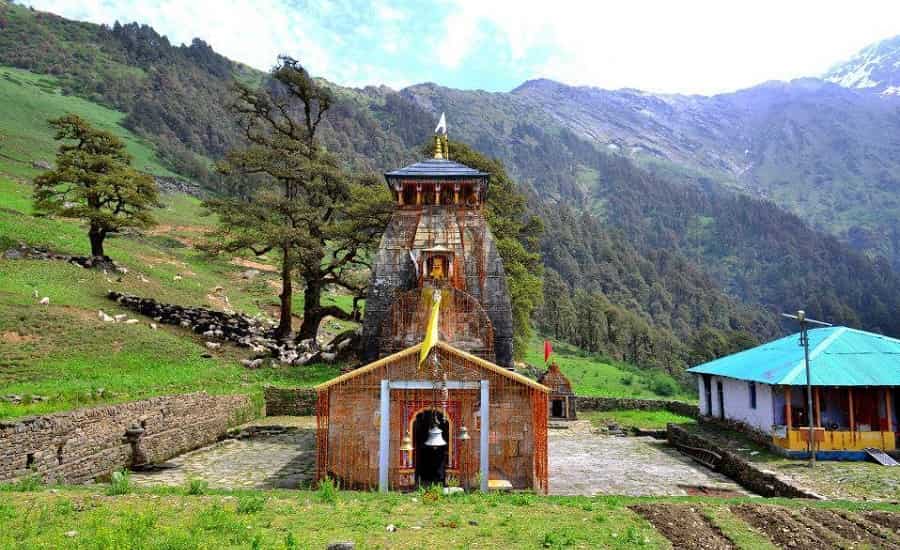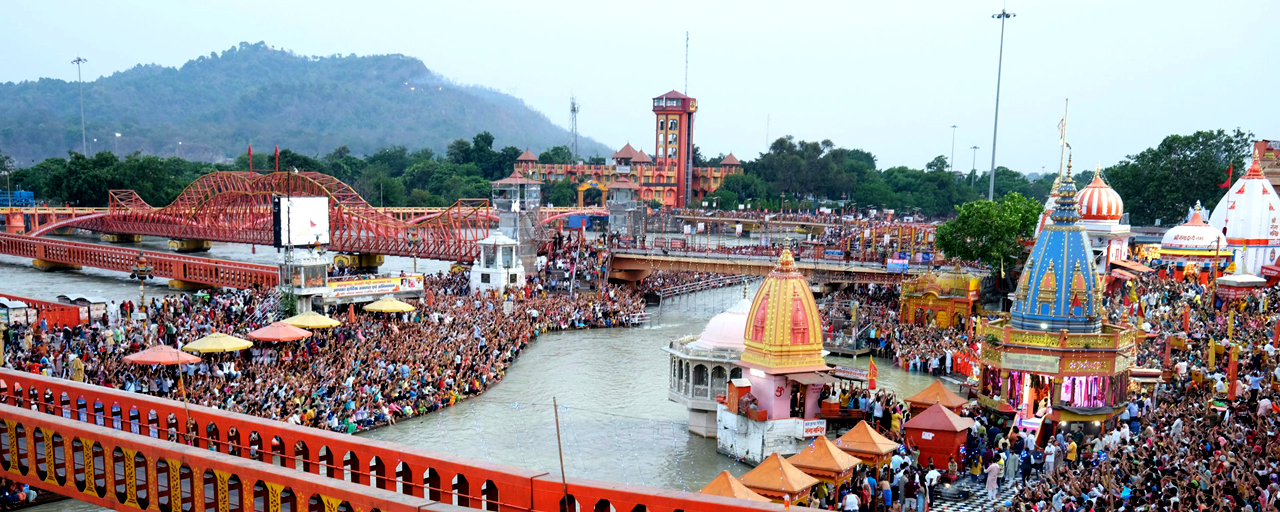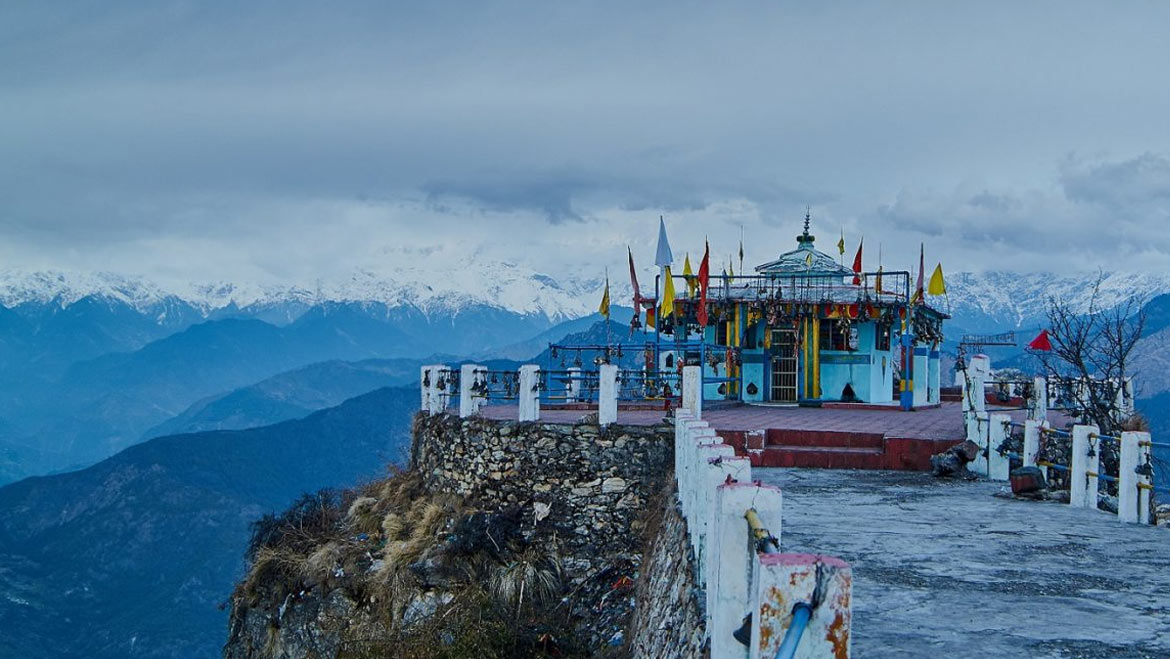Ask anyone in Almora about September and they’ll tell you the same thing—मेला लगने वाला है. The Nanda Devi Mela isn’t just marked on calendars. People feel it coming. The air changes. Shops start stacking sweets, tailors stay up late finishing blouses, and kids count days, not for school holidays but for the sound of the ढोल.
It isn’t a grand event with fancy lights. It’s simpler. More raw. And maybe that’s why it matters more.
The Temple and the Town
At the heart of Almora, tucked inside the busy bazaar lanes, stands the Nanda Devi Temple. Stone walls, carved doors, and the quiet face of a goddess who has been proper here longer than memory.
The Chand kings once called her their कुलदेवी (family goddess). But walk into the courtyard during the mela, and you’ll see she belongs to everyone. Women in red saris, farmers in rough wool jackets, students with cell phones—all crowd the same steps, all bow to the same mother.
And Almora itself… it feels like the whole town bends around the temple. Houses lean in, the market thins, and for those few days, everything points to Nanda.
The Story That Lingers
Every mela has a story. This one carries many.
Some say the Chand rulers brought the goddess here centuries ago, placing her in the heart of their capital so she could guard the land. Others talk of older legends, where Nanda is not just a goddess but the mountain herself—majestic, fierce, and protective.
For most locals, though, the story is simpler. She is माँ नन्दा. A mother figure you don’t need to explain. You go to her, you ask, you thank. That’s enough.
How It Begins
The mela starts on Nandashtami (नंदाष्टमी), usually around late August or early September.
Morning light falls on the temple courtyard as priests and families prepare the idols. Nanda and her sister Sunanda are shaped from banana stems, dressed in bright cloth, and crowned with flowers. Fragile, temporary, yet powerful.
By midday, a procession winds through Almora’s narrow streets. Flags flutter, conch shells blow, children run ahead. The idols are carried slowly, swaying to the beat of the नगाड़ा. Shopkeepers shut their doors for a while just to stand on the threshold and watch. It’s one of those moments when a whole town moves together.
Inside the Worship
Step into the temple during the mela, and the air feels heavy with incense. The bells never stop. चंदन paste is rubbed onto the idol, grains of rice are offered, and दीपक flames of the दीपक sway in the wind. Women hum old devotional lines under their breath. Some men fold their hands, some touch their foreheads to the cold stone floor.
Nobody is in a hurry. Faith has its own pace.
Music and Dance Around the Temple
Walk outside, and the mood changes. The courtyard bursts into sound.
A group of जागरिया sit cross-legged, beating small drums and singing the जागर. Their voices are raw, almost rough, but they carry weight. Each verse is like a story wrapped in rhythm, telling of the goddess, of battles, of blessings. The crowd stands close, some nodding in time, some just listening with eyes half-closed.
Not far off, the झोड़ा begins. Circles form. Men and women link hands, stepping forward, back, clapping in unison. The song rises, simple and repetitive, yet it grips you. You don’t need to understand every word. The rhythm pulls you in.
Then comes छोलिया—swords flashing, men in white dancing in mock battle. The clang of steel mixes with the beat of the ढोल, and suddenly the atmosphere sharpens, like history replaying itself.
This isn’t performance for tourists. It’s a tradition to breathe in front of you.
The Bazaar Smells and Sounds
Beyond the temple, the mela spreads like a festival of senses.
You catch the smell first—जलेबी frying, पकौड़ी, hot tea in कुल्हड़. The smoke from food stalls mixes with the pine-scented air of the hills.
Stalls line the lanes. Wooden toys painted in bright colors, glass bangles that clink when tried on, handwoven पाँघर shawls stacked neatly. Children tug at their parents’ hands, pointing at cheap balloons or candy sticks. Bargaining voices rise and fall. Somewhere, a dhol beats faintly, always in the background.
It feels crowded, yes. But not overwhelming. Like a family gathering where you don’t know everyone, yet you still belong.
The Setting Around It All
September in Almora is a season of its own. The rains have just passed. Valleys below are lush and green. Clouds float lazily throughout the ridges. And on a clean day, you may trap a glimpse of Trishul or even the long way off top of Nanda Devi herself.
For many, that sight feels just like the goddess looking at her personal celebration.
If You Plan to Go
- When: Every year around Nandashtami, past due August or early September. Lasts 3–4 days.
- Where: Nanda Devi Temple, Almora, Uttarakhand.
How to reach:
- By air: Pantnagar Airport, about 125 km away.
- By train: Kathgodam, around 90 km, then shared jeeps or buses uphill.
- By street: Regular buses and taxis join Almora with Haldwani, Nainital, and Kathgodam.
Tip Of Advice
- Carry: Light scarf for evenings, cash for stalls, and appreciation for neighborhood customs.
- Expect: Idol processions, temple rituals, jagar songs, folks dances, and a humming bazaar with meals and crafts.
Why It Matters
For the humans of Almora, the mela isn't just about devotion. It is reminiscence, inheritance, and the rhythm of life.
Children research songs without realizing it. Farmers plan their journeys around it. Families meet relatives they haven’t seen in months. The goddess sits in the middle, but around her, the community finds itself again every 12 months.
It matters because it is not made for outsiders. It is lived by insiders. That honesty is rare.
Closing
When the last day ends, idols are taken back. The music softens. Stalls pack up. The town exhales. But the echo of the mela stays. In the beat of the ढोल that still rings in your head. In the smell of incense that lingers in your clothes. In the quiet smile of the goddess, waiting again for next year.
Some festivals fade when the lights go off. The Nanda Devi Mela doesn’t. It sits inside you, like a story that keeps retelling itself.

